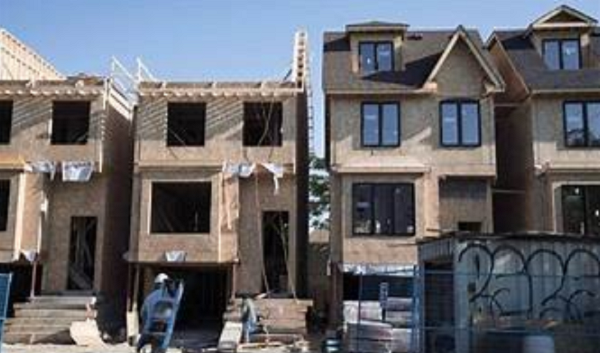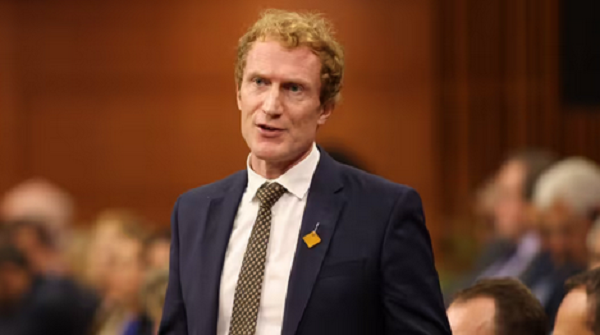While cost of rent continue to fall in Toronto, construction of new homes never ceased
The cost to rent a home in Toronto and Vancouver is falling. At the same time, the construction of new homes – especially rentals – is in a multiyear surge, compared with before the pandemic.
This news doesn’t mean it is suddenly cheap to rent in the two most expensive cities in the country or that there’s enough new housing in Canada. But it does show a significant increase in the new supply can help ease prices. The market works.
The shift in Toronto is particularly striking.
The average cost to rent a one-bedroom is $2,443, down 6 per cent from a year ago, according to Urbanation and rentals.ca. A two-bedroom is $3,193, down 5 per cent. Meanwhile, according to Canada Mortgage and Housing Corp. data, Toronto saw 6,701 new rental homes completed in 2023 and the city is on pace for about the same this year. The annual rate of new rentals is almost triple that of the five years before the pandemic. More broadly, more new homes of all types have been built in Toronto in the first seven months of this year – 30,116 – than were built in all of 2019 – 27,410.
The lesson is clear: new supply can make a difference in a housing market where the cost to rent and buy has shot into the stratosphere. But more supply is still needed. Governments must continue to do everything they can to speed the building of new homes, from loosening overly strict zoning rules and reducing too-high development taxes on the civic level to last year’s federal move to cut the GST from new rental housing.
Opposition from existing homeowners remains a primary obstacle to overcome. That’s why zoning for greater density is important, so builders don’t have to go through long, expensive battles at city hall to get even small projects built. Two recent examples in Vancouver and Toronto illustrate the continuing problem.
Five years ago in Vancouver, a small five-storey rental building in Kitsilano, near downtown, was proposed. Twenty per cent of the units would be priced well below market rates. Local homeowners expressed their extreme opposition in 2019: “It’s like dropping the ghetto in Kitsilano.” City council eventually approved the project and the builder received a low-cost loan from the province. The apartments are finally ready next month. Opponents now criticize the market-rate apartments for being too expensive. It might have been different if the project wasn’t dragged through unnecessary delays as the cost to build escalated during the pandemic.
In Toronto, a three-storey 11-home project close to a subway station, near downtown, didn’t make it off the drawing board, as more than three dozen neighbours opposed it. The project required what’s called a “minor variance” and was twice rejected by Toronto’s Committee of Adjustment. The second no landed last week. The city sabotages itself.
Over the past several years, Toronto and Vancouver have somewhat reformed the strict zoning restrictions against new housing, yet it is not nearly enough. Old obstacles such as the Committee of Adjustment need to be completely overhauled or simply abandoned.
Amid the push to build more housing, there is the specific challenge of affordable housing. Government strategy in recent years, from Ottawa to provinces such as British Columbia, has been low-cost loans to private developers who promise to include a portion of lower-cost homes. This minimizes the bill for taxpayers and while it has helped get more homes built, it hasn’t unleashed a torrent of affordable homes. A Globe analysis this year showed that many such homes cost more than what many renter households can afford.
The key policy pillar that supports lower-cost housing is allowing significant density across the entirety of cities such as Vancouver and Toronto. That does not yet exist. Among the ideas that remain on the shelf are numerous recommendations from a landmark Ontario housing report in early 2022, including buildings of up to 11 storeys along all streets with transit, without any special approval.
But the same report made it clear that an affordable housing strategy has to be deeper than relying on for-profit developers. That means money. One smart option is using public land to build, a move Ottawa has started to pursue.
Opponents of new housing have claimed new supply wouldn’t rein in prices. They’re wrong. The decline in rent in Toronto, amid a surge of supply, shows the central role for the market in housing.
This article was first reported by The Globe and Mail













